The following is a guest post by Nicolas Roth, a historian, gardener, and garden designer. His research explores visual and intellectual culture in early modern South Asia and beyond, with a particular focus on landscape and garden history.
***
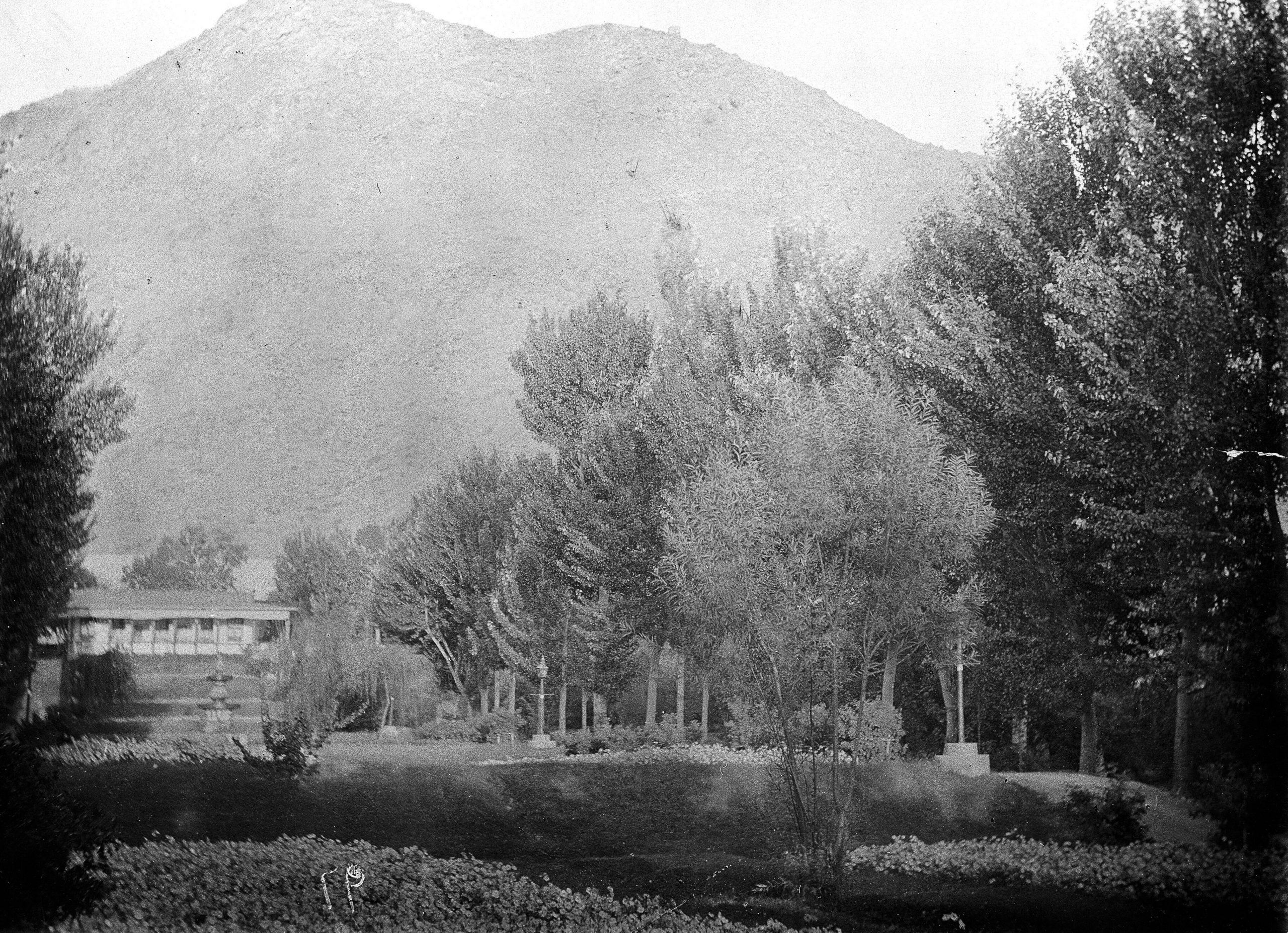
The Hidayat-i kisht-i gulha va qalamahha va hububat or “Guidance on the Cultivation of Flowers, Cuttings, and Seeds,” a gardening book published in Kabul in 1921, discusses among various novelties “a double-flowered petunia which until now has not set seed in the capital.” Double-flowered plant cultivars commonly fail to produce seed, as the extra petals often result from a mutation of the flower’s reproductive parts. Such strains have to be propagated by other means, and the book goes on to provide detailed instructions on how to grow the special many-petalled petunias from cuttings.
Yet the guide does not mention why a double-flowered petunia that cannot be grown from seed was so noteworthy in the first place – namely how different it was from the petunias already familiar. Petunias were far from new or rare in 1920s Afghanistan. Quite to the contrary: an older, well-established strain – single-flowered and easily grown from abundantly produced seeds – reigned supreme in flowerbeds throughout the country, from at least the 1890s through the end of the twentieth century.
Countless images attest to the ubiquity of these petunias and to the skill of Afghan gardeners in growing them to perfection; in almost every major body of photography of Afghanistan produced over the 20th century, the telltale clouds of pale blossoms make an appearance.
In their ubiquity and in the great diversity of settings in which they appear, the petunias reveal the persistent importance of flowers and ornamental gardening in Afghan society. The images are also indicative of the historical development of Afghanistan’s horticultural practices, recording both the adoption of new plants and stylistic influences and a strong adherence to tradition even amid instability and upheaval.
Perhaps the earliest examples are the pictures taken of Bagh-i Babur in Kabul and Bagh-i Shahi in Jalalabad by British doctor Lillias Anna Hamilton (1858-1925) when she served as court physician to the Afghan ruler ‘Abd al-Rahman Khan (r. 1880-1901) in the 1890s (Fig. 1 and 2, respectively).
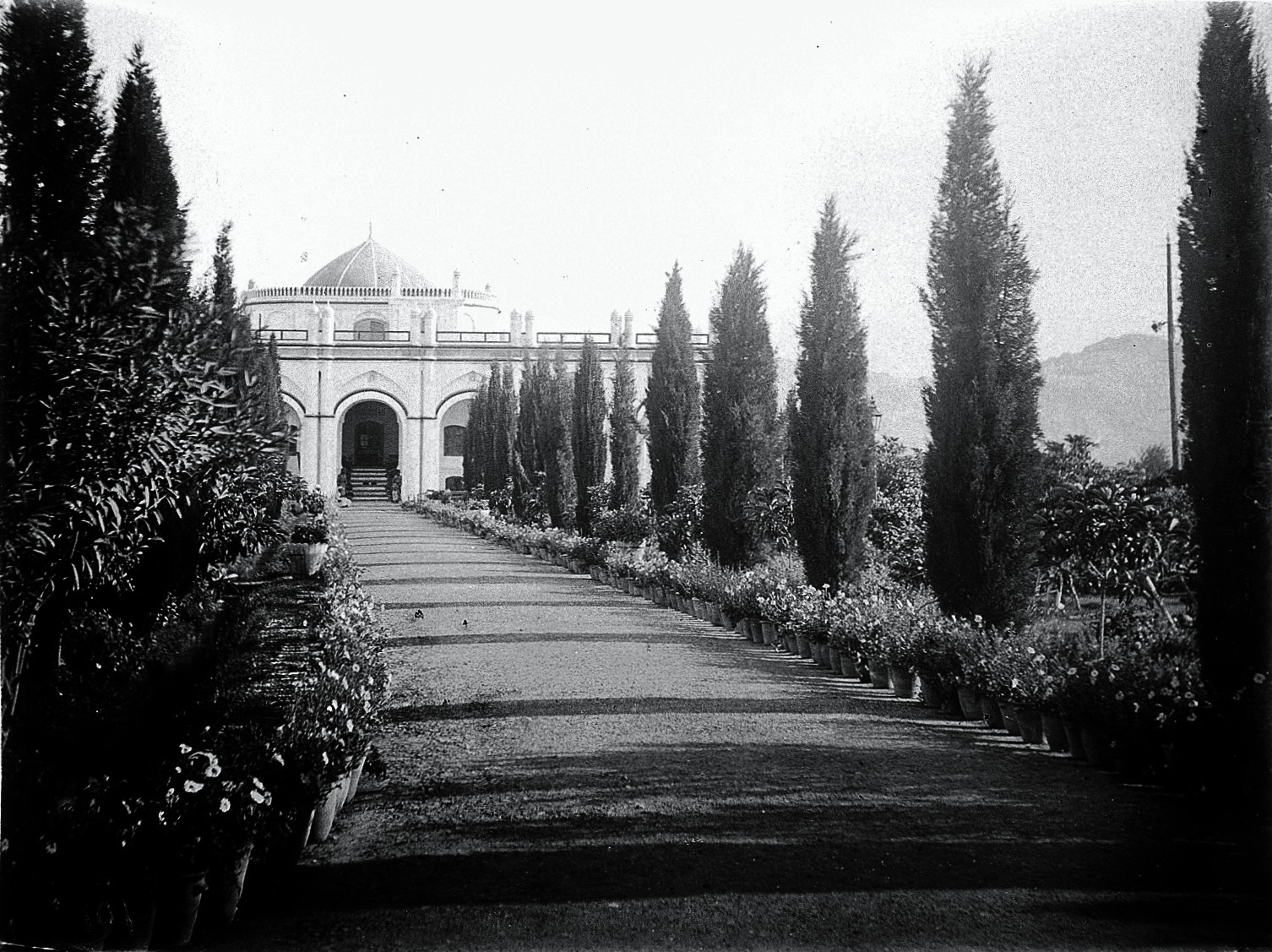
Virtually all garden varieties of petunias are cultivars of a nothospecies – an artificial hybrid of various wild species – known botanically as Petunia x atkinsiana or P. x hybrida, the result of crosses carried out in Great Britain in the mid-nineteenth century between P. axillaris and P. integrifolia, two wild species native to southern Brazil, Uruguay, and Argentina. The strain that enjoyed enduring popularity in Afghanistan is one of the earliest results of that hybridization, still very close in appearance and fragrance to the sprawling, white-flowered, and sweetly scented P. axillaris, but with an expanded color range of pinks and purples provided by P. integrifolia.
In North America today this strain is commonly sold as ‘Old Fashioned Vining,’ while in Europe it has almost entirely disappeared. And yet both the history of its creation and its early arrival in Afghanistan speak to the extent and speed of global circulation in nineteenth-century horticulture, and in particular within and at the edges of British colonialism. For how did the pastel beauties likely reach Afghanistan but by way of British India? Tellingly, in Pashto and Dari (Afghan Persian), petunias are not usually called gul-i atlasi or “velvet flower” as in Iranian Persian but rather patuni, cognate of the English name. It is perhaps fitting, then, that they appear in the pictorial record of so much of Afghanistan’s twentieth-century history, as the nation grappled with modernization, global politics, domestic upheaval, and repeated, violent interference by imperialist powers.
One image from 1922, taken by American adventurer Lowell Thomas, shows King Amanullah Khan (r. 1919-1926), grandson of ‘Abd al-Rahman Khan, with his two eldest daughters, Aminah Shah and ‘Abidah, in a petunia-filled parterre in the new public gardens at Paghman near Kabul (Fig. 3). Three years earlier, Amanullah had reclaimed Afghanistan’s control over its foreign policy from the British Empire in the Third Anglo-Afghan War before embarking on an ambitious program of modernization.
The European-style gardens of Paghman, captured in color for the first time in 1928 by French photographer Frédéric Gadmer, were part of these modernization efforts (Fig. 4). However, Gadmer found the same exuberant expanses of white, pink, and purple blossoms in all sorts of spaces, all over the country. They are there in the more traditional garden inside a palace complex in Kabul as well as surrounding the European-style residence in Qal‘ah-i Fatuh on the southern outskirts of the city where the last Emir of Bukhara was living in exile after having been deposed by Russia in 1920 (Fig. 5 and 6, respectively). In Kandahar, they grace the broad open plaza outside the Governors’ Palace, and at the other end of the country, in Herat, Gadmer found them adorning the front yards of stately new homes (Fig. 7).

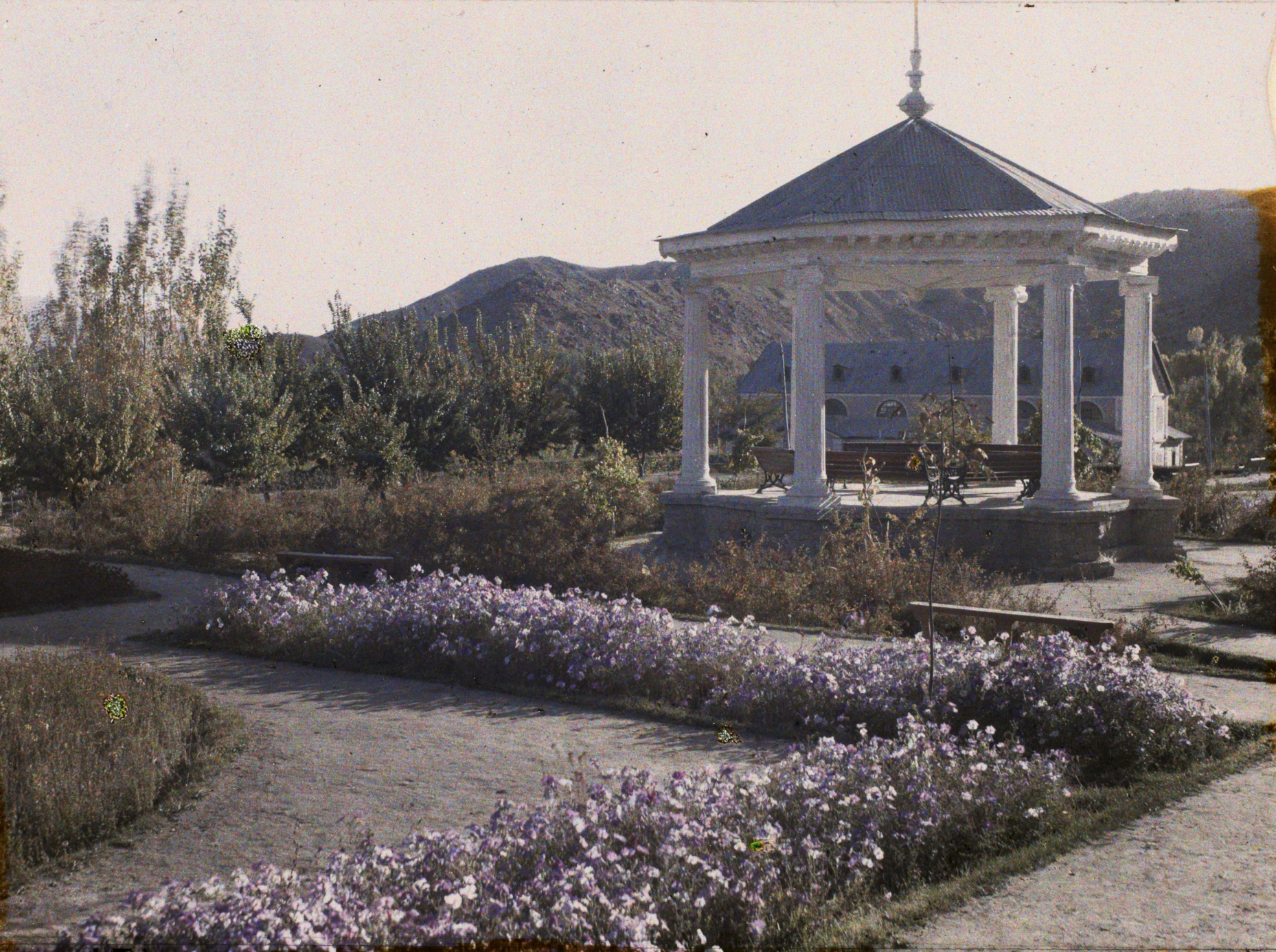
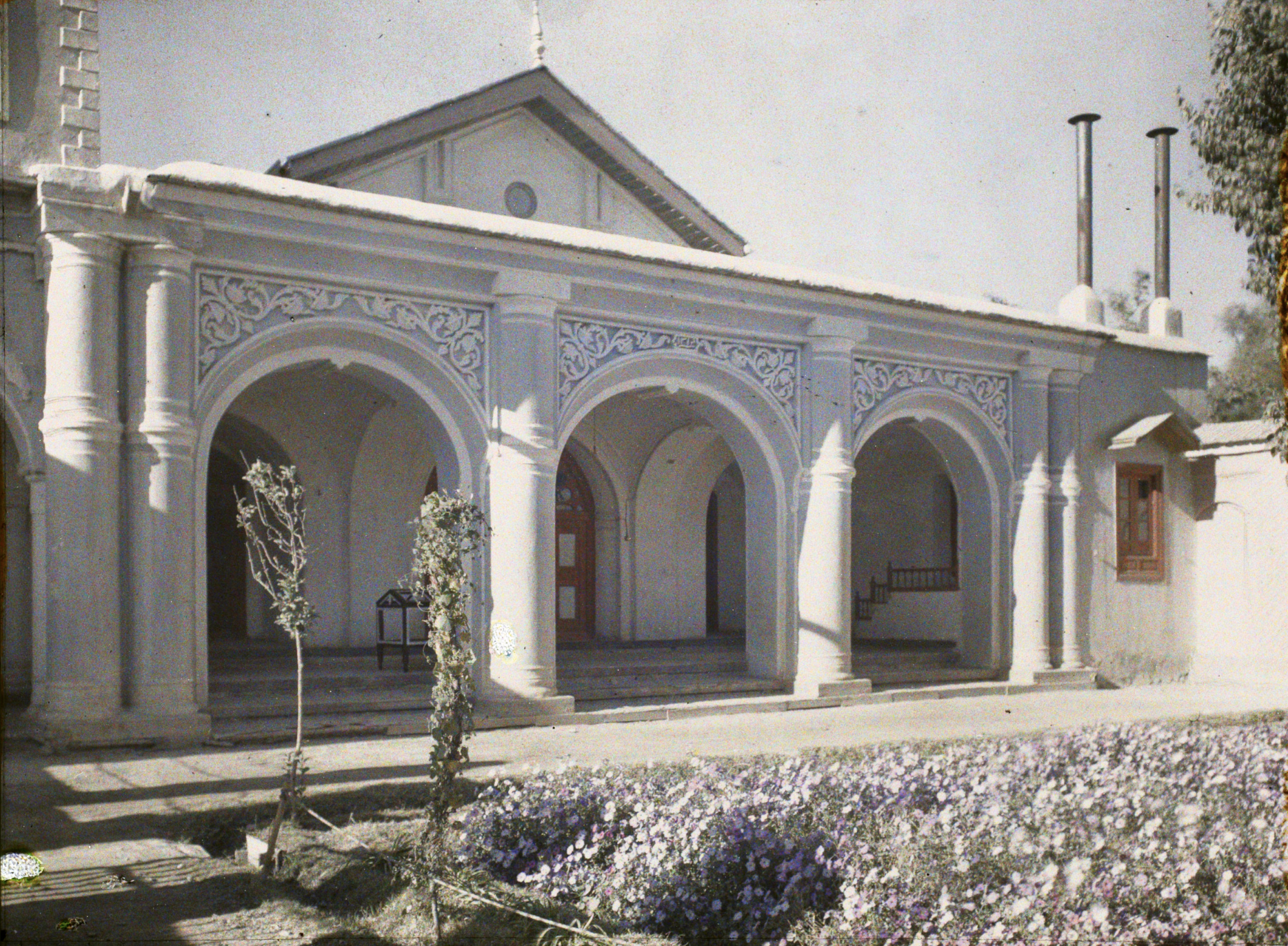
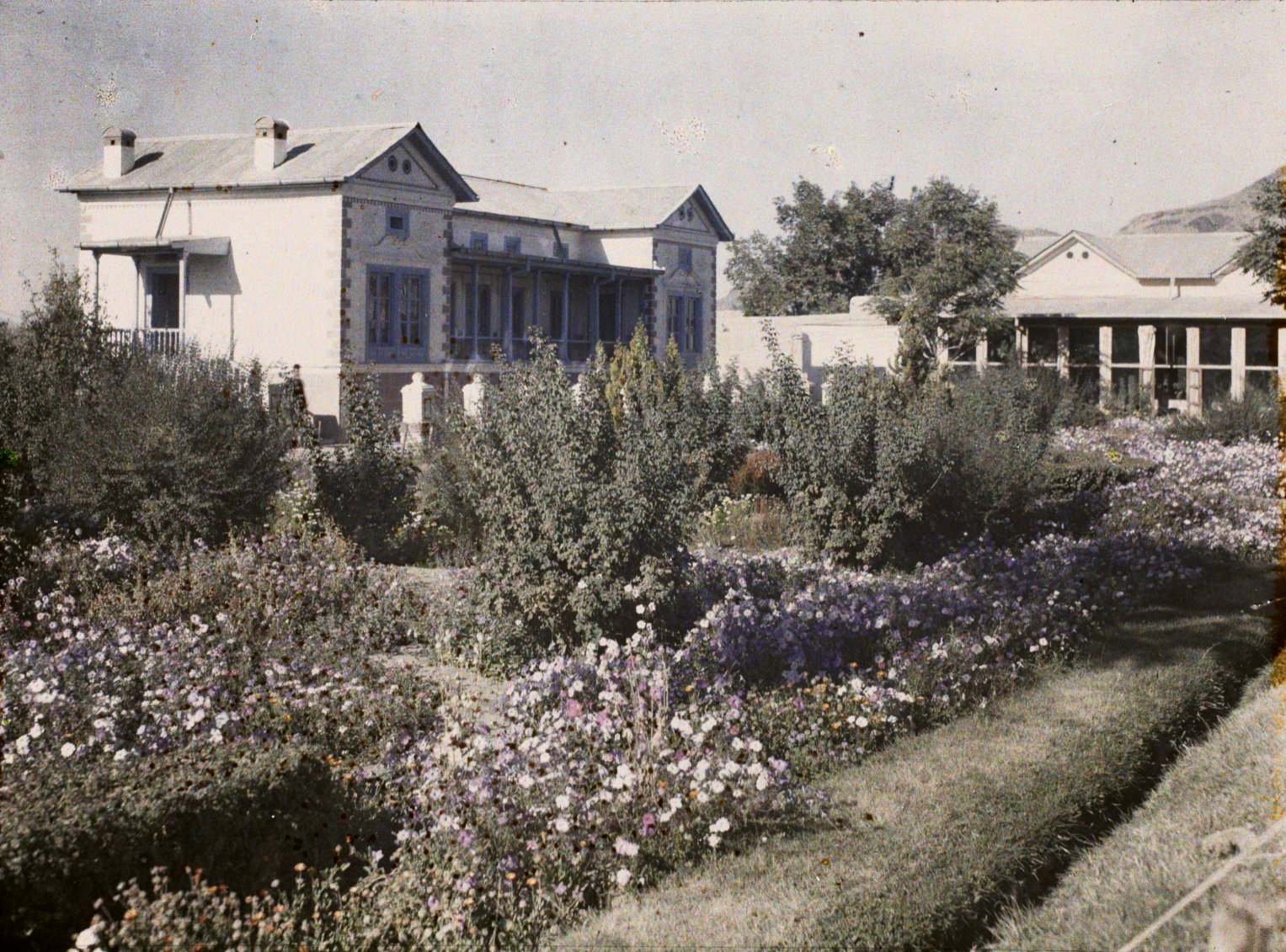
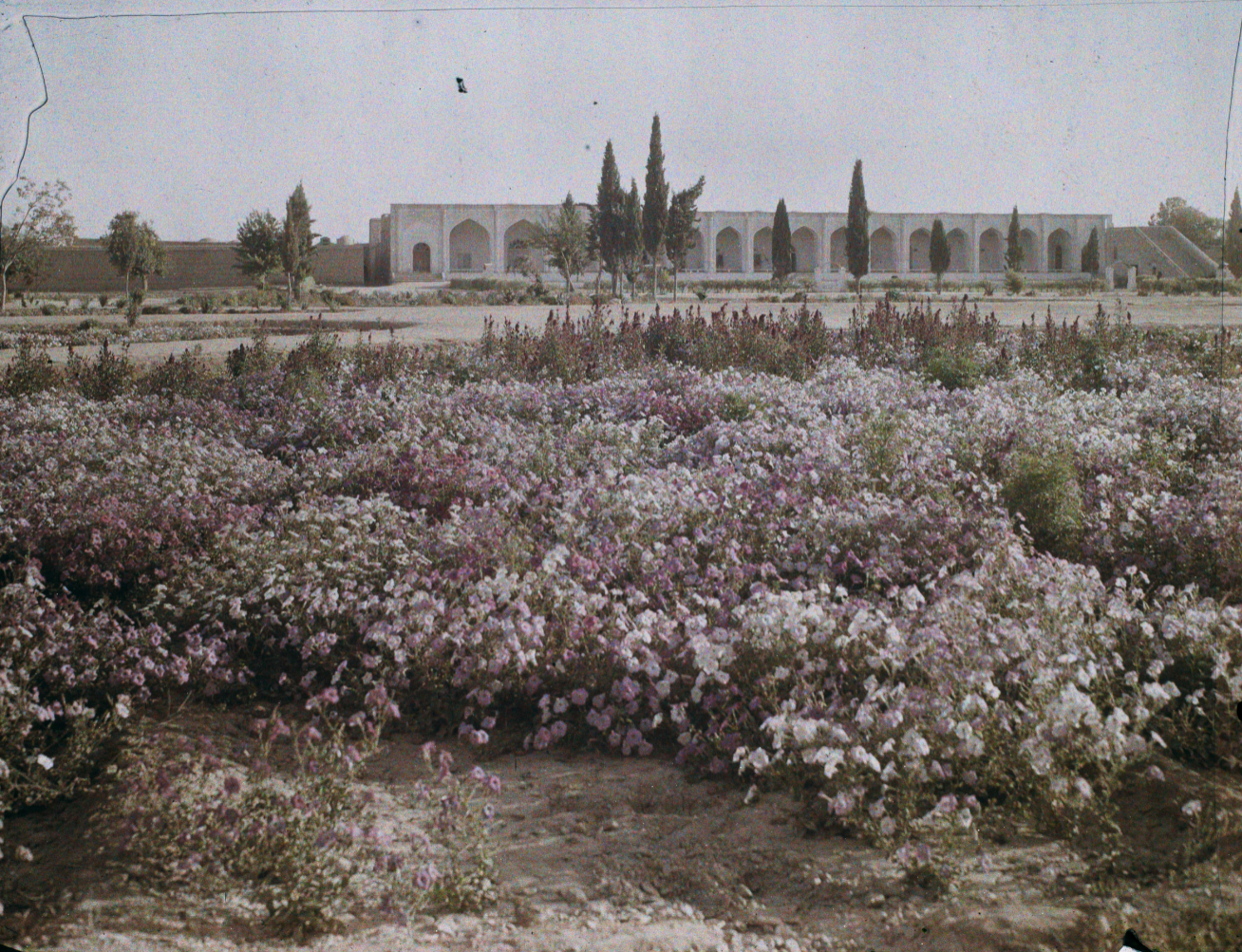
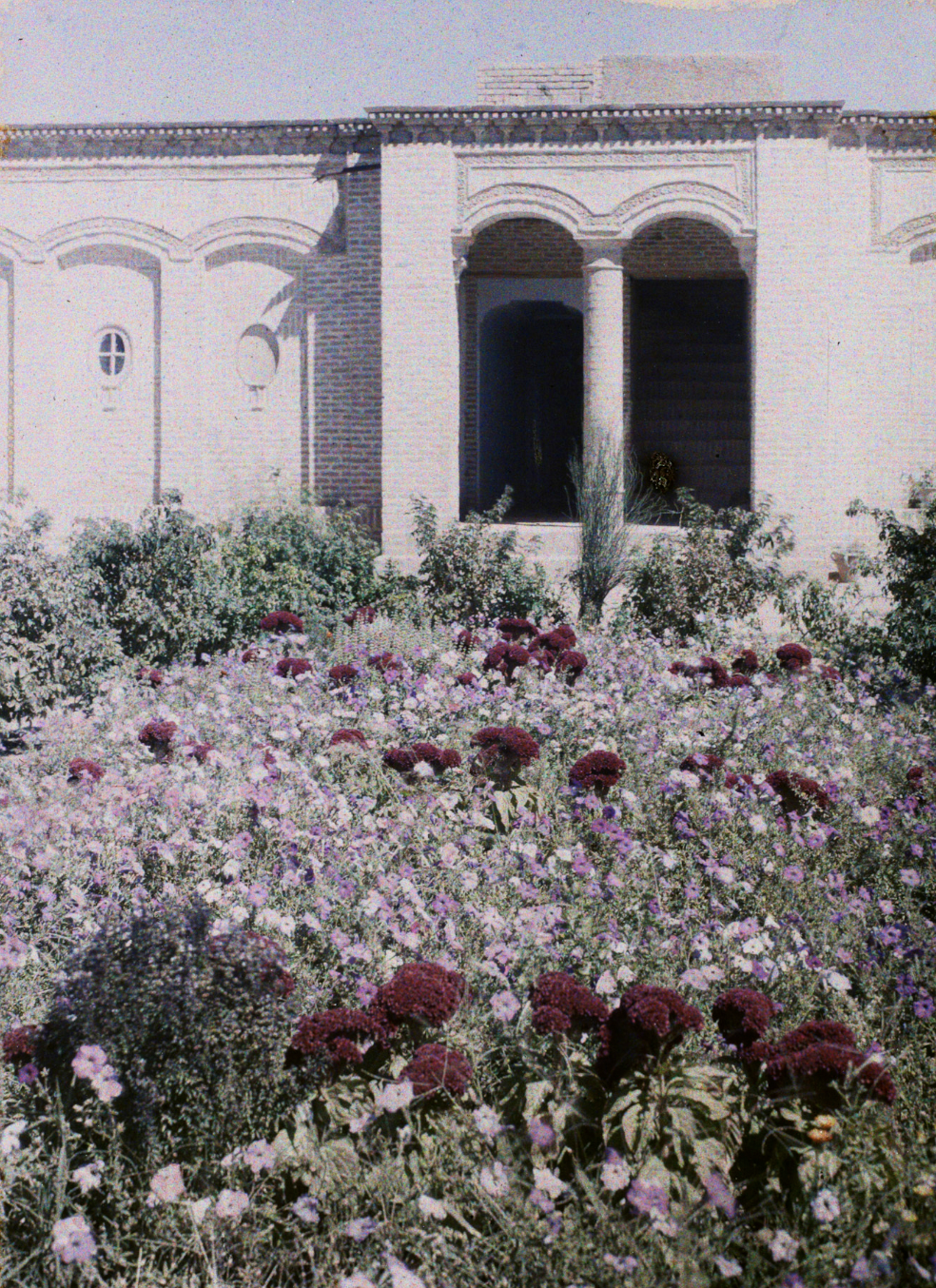
While early visitors took pictures of Afghan petunias in elite settings connected to privilege and power, later photographers captured them in humbler contexts. Perhaps even more so than those grown in grand parks and formal gardens, these more plebeian petunias convey the remarkable love for flowers and gardening in everyday Afghan life and culture. They illustrate an impulse to cultivate and beautify even where means are limited and, as the country descended into armed conflict, under increasingly violent and unstable circumstances.
In Herat, American photographer Josephine Powell found a simple bed of petunias enlivening the dusty ground just outside the ruins of the Timurid Gawhar Shad madrasah complex in the late 1950s or early 1960s (Fig. 9). A few years later, Wilford Peloquin captured a mid-century modern pool scene reminiscent of a David Hockney painting at a rest house somewhere along the highway from Herat to Kandahar. Once again, the soft white and purple of the petunias is front and center (Fig. 10).
Another decade on, Polish traveler Marek Bero photographed a scene in Qaysar District in Faryab Province that seems diametrically opposed in terms of modernity, showing a traditional mudwalled single-story house in the countryside. Yet once again in the foreground there is a swath of delicate petunias, grown in plots edged with small earthen berms to keep in irrigation water (Fig. 11).
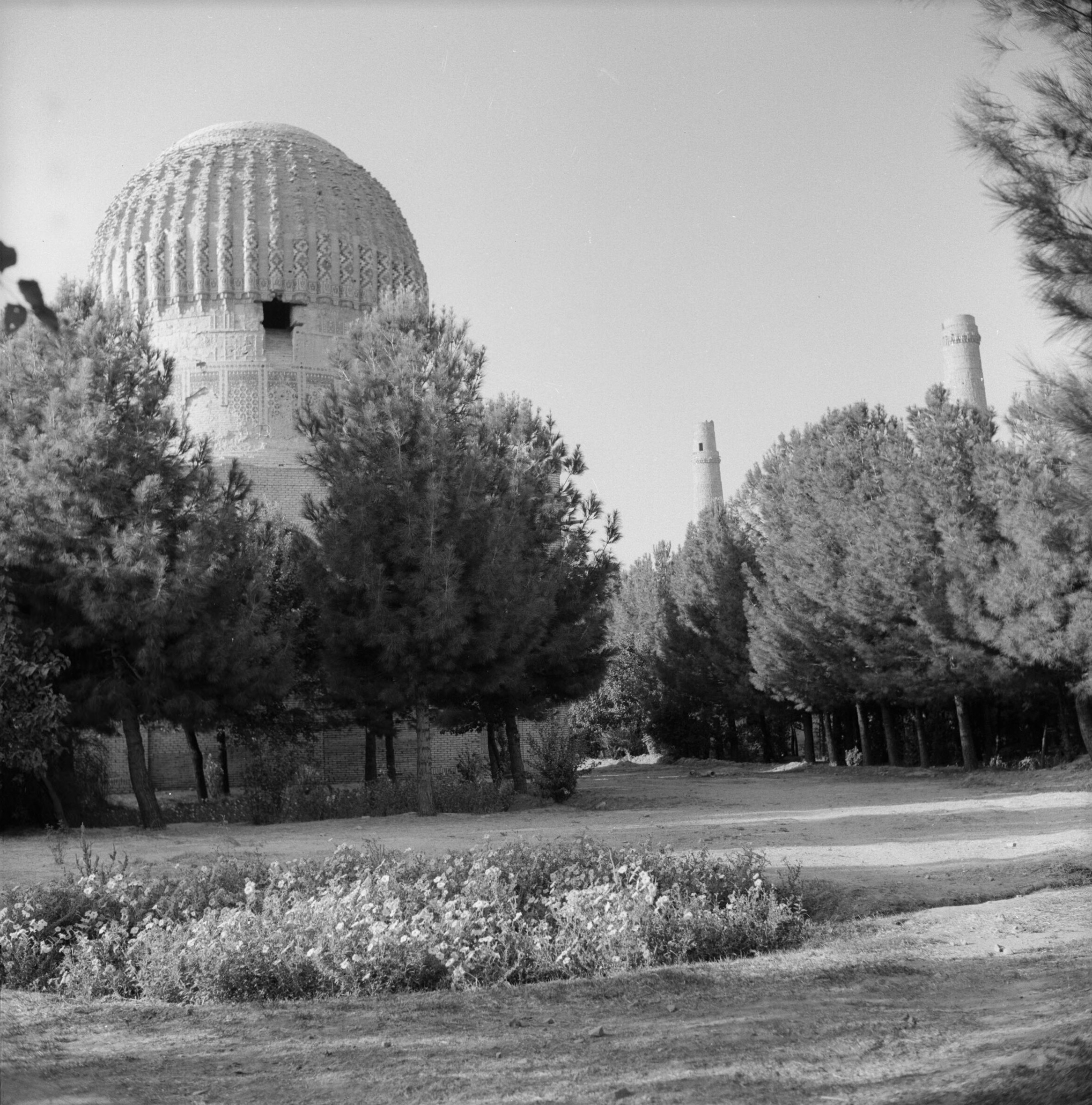
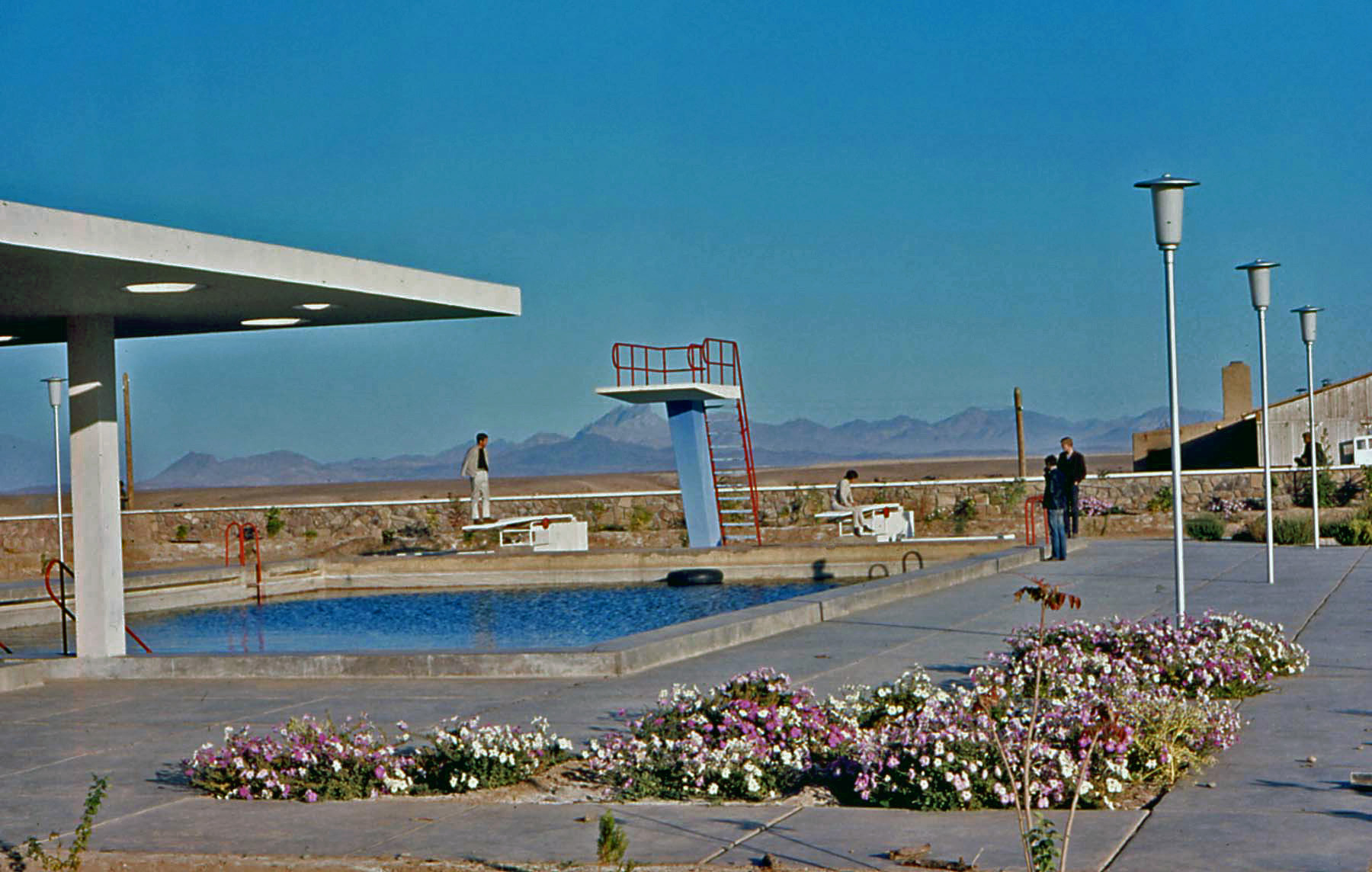
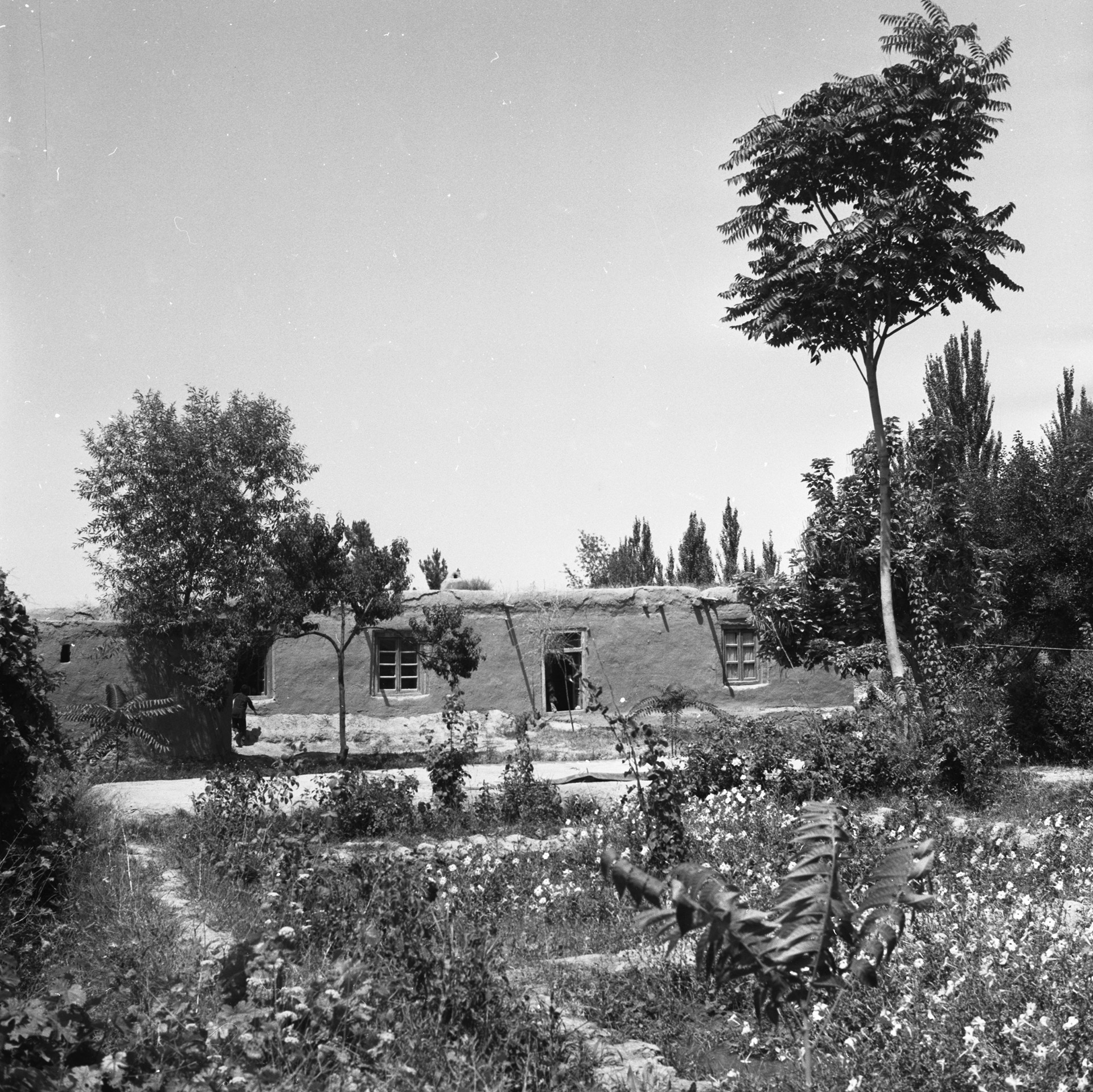
From the late 1970s onward, Afghanistan’s pictorial record increasingly turns into an archive of war and destruction. All the more remarkable, then, that the petunias persist.
The photographers of the Afghan Media Resource Center, who were embedded with Mujahideen factions fighting the Soviet-backed central government and Soviet invasion throughout the country, found them blooming gloriously in Jaji District of Paktia Province and Samar Khayl District of Nangarhar Province (Fig. 12 and 13, respectively). They also captured the fighters’ tender appreciation for the beauty of the flowers, including in a striking shot of two young men, one with his rifle slung over his shoulder, happily arranging fluffy pastel bouquets in old soup cans and jars (Fig. 14).
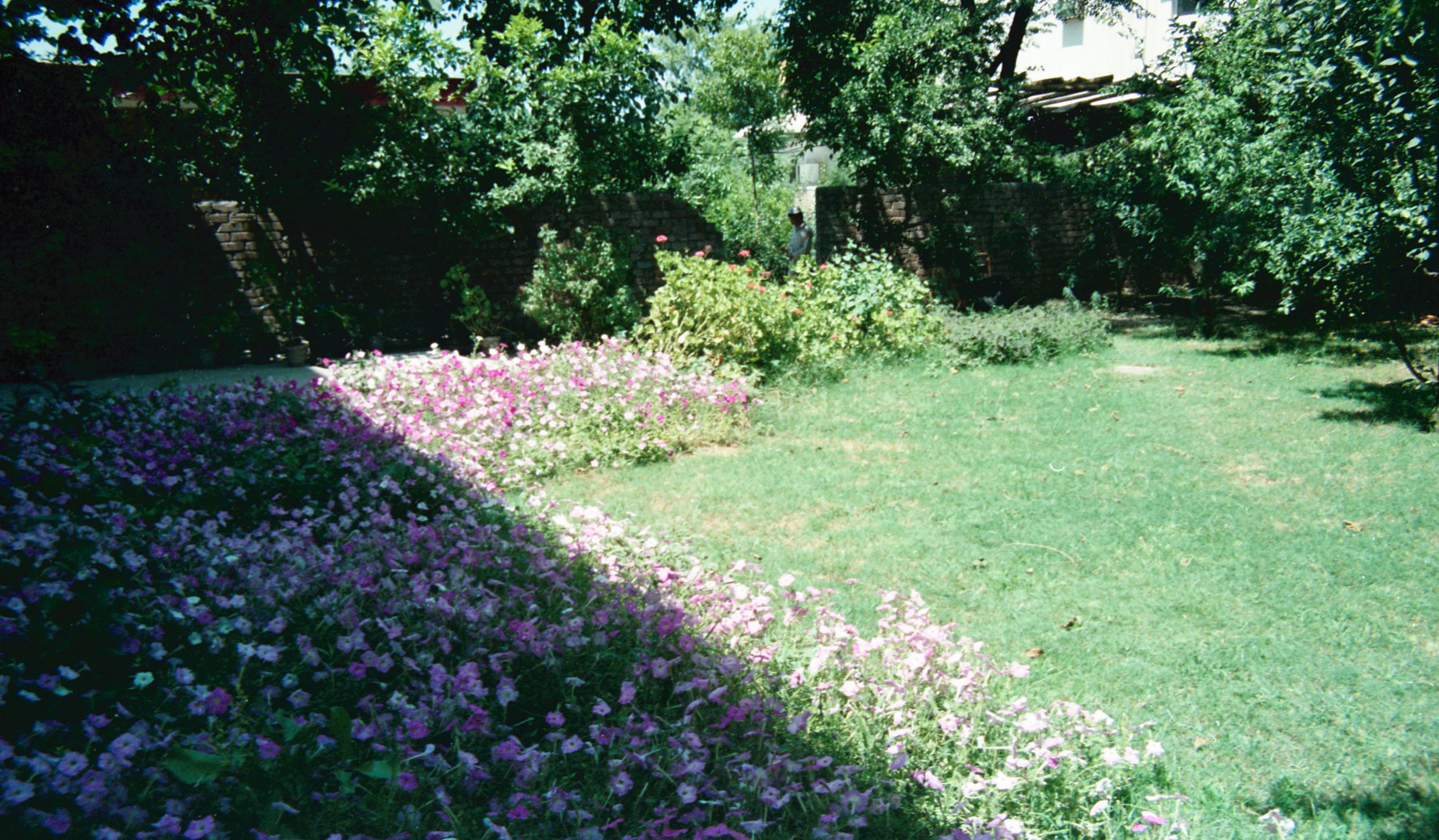
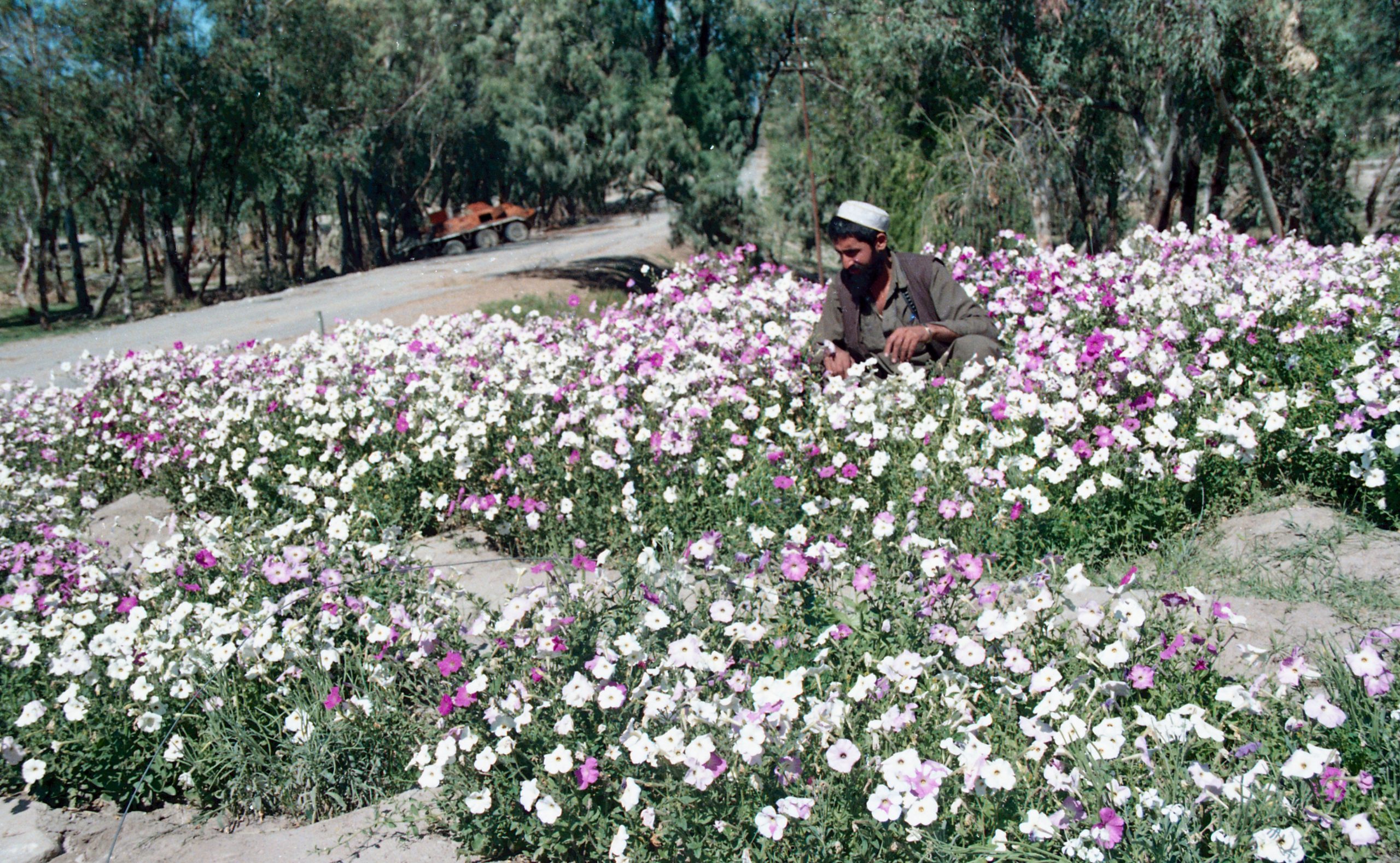
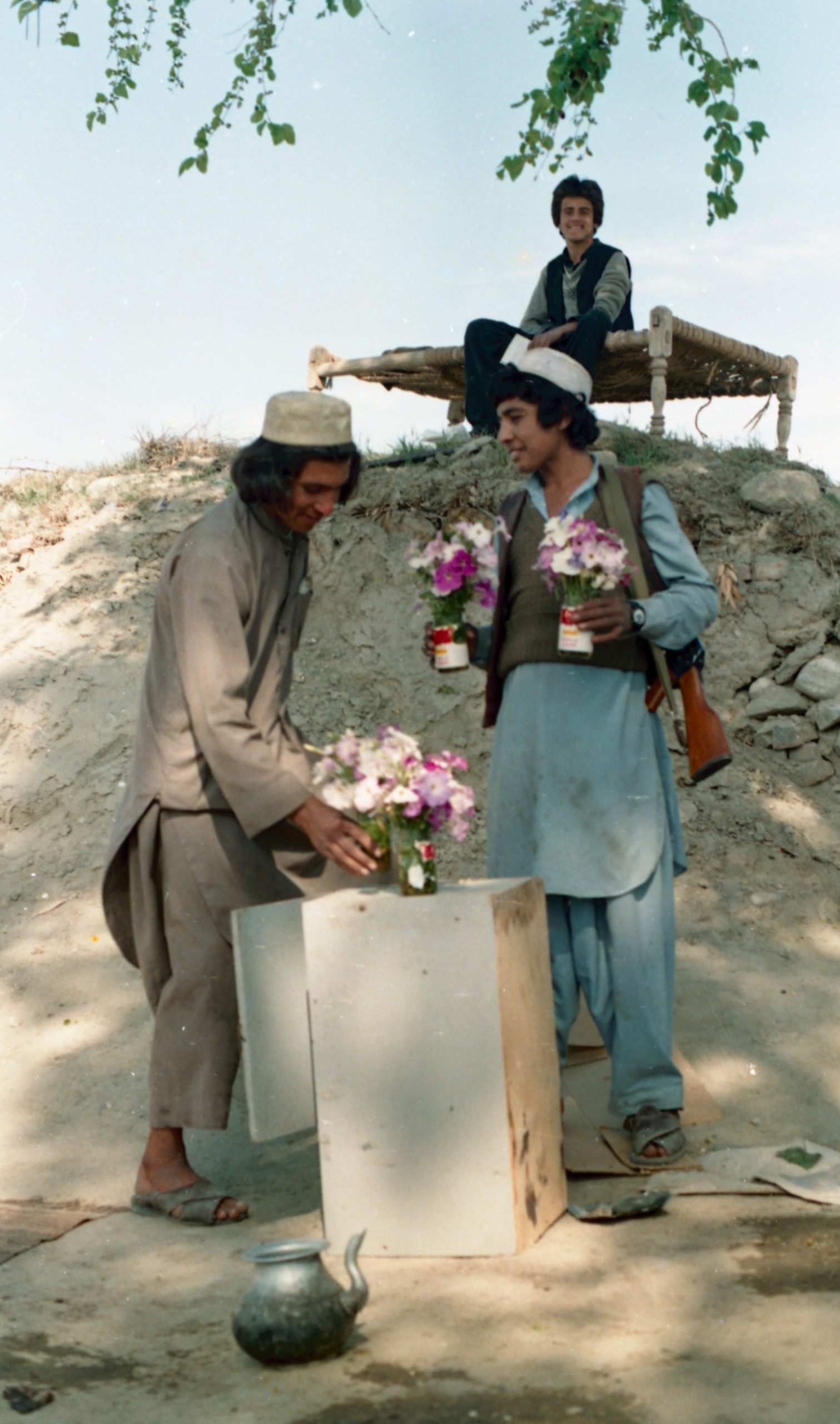
The century-long chronicle of petunia cultivation in Afghanistan that can be pieced together across photographic collections may be largely coincidental, in the sense that the flowers were not the primary facet of Afghan history, heritage, or daily life the photographers were trying to document. Yet precisely that makes them such a revealing detail, highlighting simultaneously the importance of horticulture within Afghan tradition and culture and the strong adherence to tradition within that horticulture.
Over the last two decades, against the bleak backdrop of often ineffective or misguided US-led foreign military activity in Afghanistan, violent insurgency, and the eventual disastrous return to power of the Taliban, the Afghan passion for flowers and gardening has periodically been marshalled as a positive counter-narrative about the country and its people. In developmentalist accounts of progress in the country, too, Afghan gardening prowess occasionally gets a shout-out; it is in this context that the petunias appear once again in all their glory in a 2006 photograph of the improvements made to Zarnegar Park in Kabul under the auspices of the Aga Khan Trust for Culture (Fig. 15).
But the billowing clouds of pastel blooms that extend across the photographic archive of modern Afghanistan speak to more than just a redeeming cultural quirk in the face of tragic national history. They are the result of globalization and the colonial encounter and yet, as is often the case with quotidian elements of material culture, they rapidly became fundamentally of the place.
Their presence is unselfconscious; it predates, ignores, and defies the idea of Afghanistan as an intractable set of problems, and conveys its gardeners’ enduring insistence on beauty.
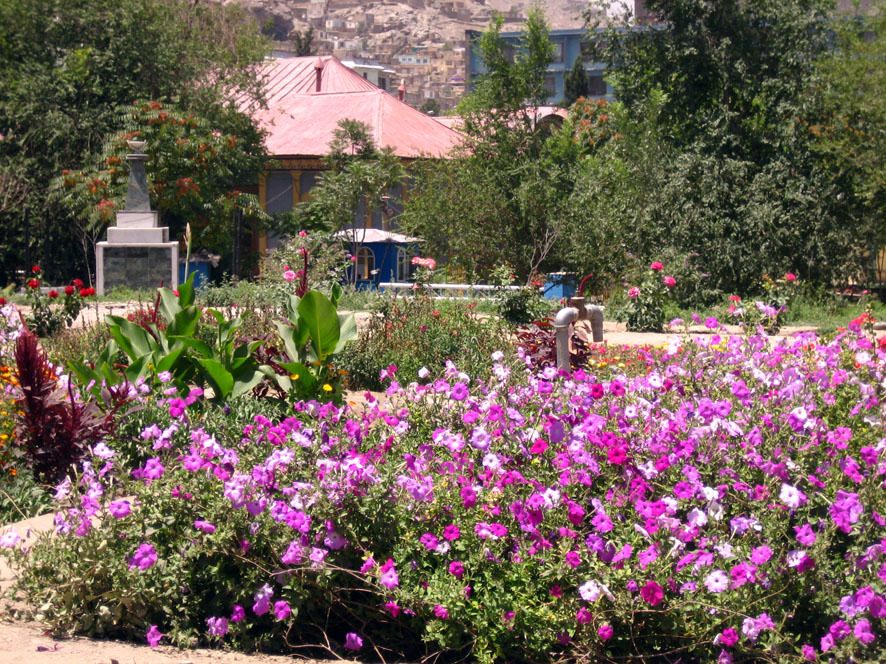
References:
Fayz̤ Muḥammad Khān. Hidāyat-i kisht-i gulhā va qalamahhā va ḥubūbāt. Kabul: Maṭba‘-i ablāgh, 1921. Available online at https://www.loc.gov/item/2001289605/.
Forbes, Stephen. “Petunias – ‘I made you take the time to look at what I saw’.” Medium Post. 2017. Available online at https://medium.com/@StephenJForbes/petunias-i-made-you-take-the-time-to-look-at-what-i-saw-617587f58748.
Snow, Lalage. The Gardeners of Kabul (2017; London: BBC). TV Documentary. Available online at https://www.youtube.com/watch?v=1y-DIrXUxiY.
Snow, Lalage. War Gardens: A Journey Through Conflict in Search of Calm. London: Quercus, 2018.
Zerah, Oriane, and Alice Plane. Des Roses sous les épines. Marseilles: Images Plurielles, 2023.
Zerah, Oriane. Des Afghans et des Fleurs. Sainte-Marguerite-sur-Mer: Éditions des Équateurs, 2022.










